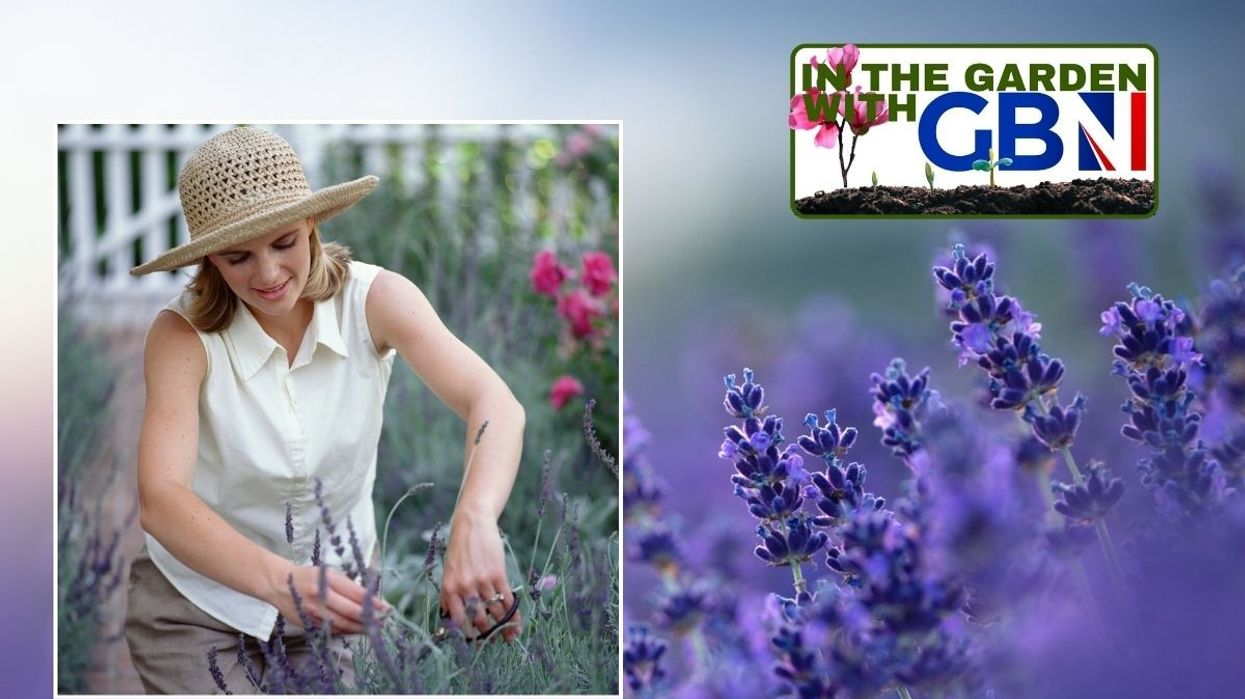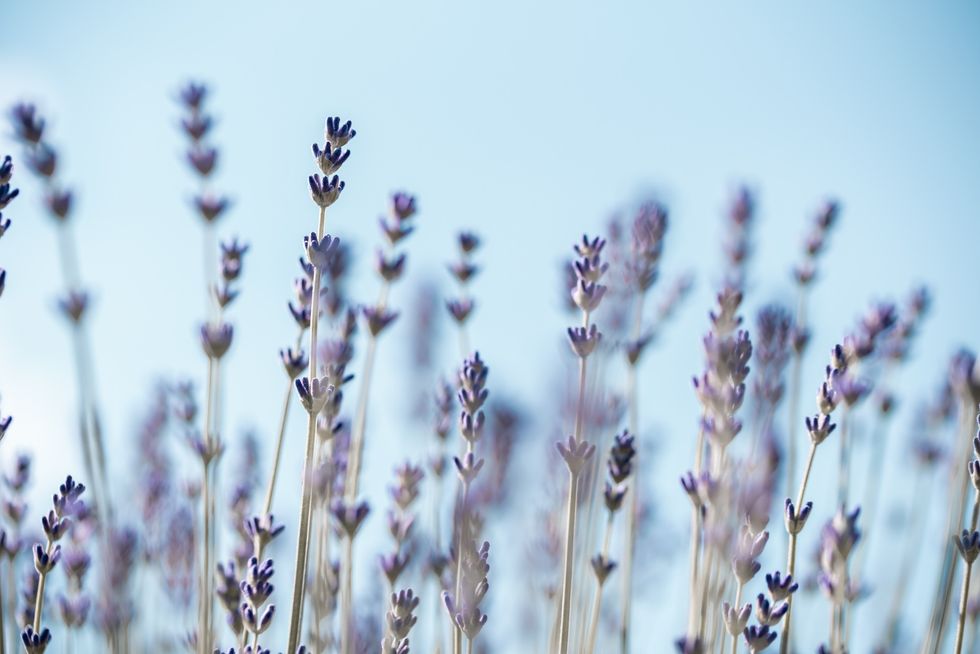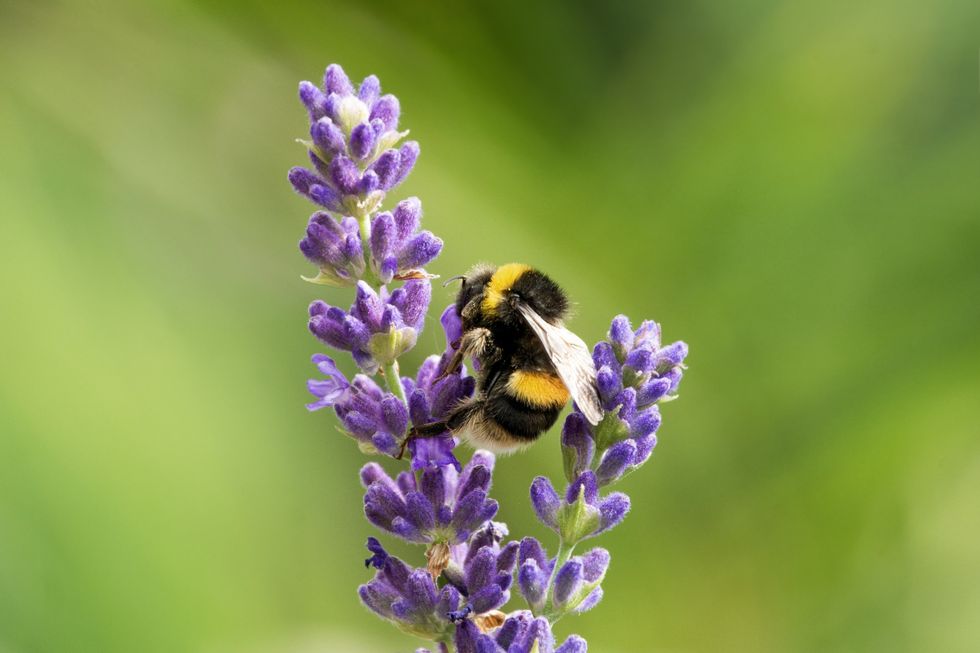In the garden with GB News: Lavender - everything you need to know about the 'low-maintenance' plant, from planting to making it last 20 years

The best ways to care for lavender have been shared
|GETTY IMAGES

GB News is sharing everything you need to know about how to grow and care for the plants in your garden and home. This week, we look at lavender
Don't Miss
Most Read
Lavender are beautiful plants that come in various shades of purple, blue, pink and white. They are known for their distinct floral scent and have connotations of tranquillity, peace and purity.
The plant is widely used in skin care, aromatherapy, and as a tool to help you relax before sleeping.
GB News shares tips for planting lavender, caring for it and making it last.
Everything to know about caring for lavender
Planting
Gardening guru Jane Dobbs from Allan's Gardeners spoke to GB News about the best way to grow this gorgeous plant.
She said: "The first step in growing lavender is selecting the right soil. This plant grows best in well-drained soil, with a pH level between 6.4 and 8.3. It is best to use soil types that are sandy or loamy to ensure proper drainage and prevent root rot caused by waterlogging.
"Plant lavender in an area that receives at least six to eight hours of direct sunlight each day. Blooms smell better when they get adequate sunlight, which promotes robust growth and boosts essential oil production."

Lavender looks lovely in flower borders, herb gardens, and as a low hedge or border edging
|GETTY IMAGES
Lavender looks lovely in flower borders, herb gardens, and as a low hedge or border edging.
Those who do not have a garden or outdoor area do not have to forgo their hopes of having lavender at home. It can be grown inside with the right know-how.
The expert said: "Growing lavender indoors is possible, but it needs plenty of sunshine and well-drained soil. Put pots near south-facing windows so they get enough light."
According to the expert, planting lavender is a straightforward affair. She told gardening enthusiasts: "You better plant the lavender as soon as it is purchased. When growing in groups, space plants about 90cm apart to allow adequate air circulation. When planting a hedge, space plants 50-60cm apart for larger cultivars.
"Plants should be levelled with the ground so that water cannot pool around the base of the roots. Your lavender plants will love a layer of mulch to conserve moisture, suppress weeds, and regulate soil temperature."
Gardening expert and co-founder of Retaining Wall Supplies Marvin Magusara said picking the most suitable kind of lavender is key. There are about 47 species of lavender. Marvin said: "As per the climate of your area, choose the right variety."
His personal favourite? Lavandula angustifolia - also known as English Lavender - is a top choice. The expert explained: "These varieties are adaptable and are known for their fragrance and good oil quality."
As for where to plant, the expert said that in addition to their "aromatic and medicinal use", lavender plants are "excellent border plants that provide structure and colour to your garden beds".
When prepping the soil for planting, Marvin advised: "Lavender grows well in well-drained soil that is a little alkaline. Add sand or gravel to the soil to enhance drainage and use raised beds if you have heavy clay soil."
When planting, the lavender should be at least two to three feet apart for good air circulation. He gave a top tip: "Planting on a slight slope can also improve the drainage."
When to plant
Lavender enthusiasts should get ready to plant in April or May, said gardening guru Jane, when "the soil naturally warms up and garden centres offer many fresh plants".
She revealed: "Lavender grows well in warm, low-humidity climates with cool nights and warm days. While it can tolerate some cold temperatures, it needs protection from frost.
"I do not recommend planting lavender in winter as young plants are prone to rotting in cold, wet soil," she advised.
How to look after lavender as it grows
Lavender is not too high-maintenance and "rarely need watering once it's well established in the ground unless drought conditions are severe", according to Jane.
However, plants in containers "need regular watering in the summer since they dry out quickly and have a limited amount of soil in which to search for moisture".
She advised: "You can keep your containers dry in the winter, maybe in a cold greenhouse or under the rain shadow of a wall to keep off excessive rain, which will improve the plant's tolerance to cold.
"The only thing you have to do is water newly planted lavender regularly for a few weeks to establish root systems, then transition to a more drought-tolerant watering schedule as they get bigger. If overwatered, lavender will get root rot. Water deeply but infrequently, letting the soil dry out in between."
Like many plants, lavender requires pruning to stay in shape. Pruning takes many forms - it can be restricting the size of a plant, removing dead or unsightly growth, increasing vigour, improving the shape, or keeping the plant in a healthy state to produce flowers and/or berries.
Jane said: "Lavender plants need regular pruning to stay in shape. Cut back the previous year's growth in late winter or early spring, but don't cut into old wood, which may impede new growth. The lavender plant requires little maintenance and isn't too fussy about fertilising.
"For healthy foliage and blooms, use a balanced fertilizer sparingly in the spring, but avoid excessive nitrogen, which can result in lush growth with no flowers.
LATEST DEVELOPMENTS
- In the garden with GB News: Lilies - everything you need to know to get the perfect lily - planting, growing and making them last at home
- In the garden with GB News: Roses - everything you need to know to get the perfect flower
- The ‘crucial task’ to complete now for a ‘show-stopping display’ this spring

Lavender are a 'great choice for supporting biodiversity'
|GETTY IMAGES
How to make lavender last at home
If you want your lavender to last longer, you must take special care of the plants during frosty months.
Marvin advised: "In the cold climate, mulch the plant lightly with gravel to improve its drainage and decrease the risk of roots getting damaged. Avoid the organic mules that retain moisture.
"Increase the life of the lavender garden by propagating from cuttings. Cut the plants in late summer - this will rejuvenate the growth of your garden without buying the new plants."
Jane added: "It is a Mediterranean plant and needs lots of sun and when it is shady, damp or extremely cold, it will not survive long."
Looking after your lavender the right way will prolong their life. Jane said: "Lavender is relatively resistant to pests and diseases, but humid environments can make them susceptible to aphids and spider mites.
"A regular inspection and good plant hygiene can keep infestations at bay. Proper care can help lavender plants live for up to 20 years. Rejuvenation and pruning can help them live longer."
Additional tips
Marvin recommended some "companion planting", explaining: "Lavender grows well with plants such as rosemary, thyme, and sage. These plants have similar growing requirements and repel pests from the other garden plants."
Jane said that lavender is a "great choice for supporting biodiversity", since lavender attracts bees and other pollinators.
For those who want lavender at home without having to go to too much effort, Jane offered a top tip. "Even though you can grow lavender from seeds, it's time-consuming and unpredictable," she said.
"If you want quicker results and greater consistency, take cuttings from healthy, established lavender plants.
"Cut off non-flowering shoots just below a leaf node to propagate lavender from cuttings. Remove the lower leaves, dip the cut end in rooting hormone, and plant in a well-draining pot. Roots take a while to grow, so keep the soil moist."
Lavender care timeline
The care lavender plants need varies with the season. Jane told gardening enthusiasts how they can look after lavender year round.
Spring:
- Pruning: Cut back dead or woody stems from the previous year to encourage new growth. Cut about one-third of the plant's height, but make sure not to damage the woody base
- Fertilising: Throughout the growing season, apply a balanced fertiliser or compost around the base of the plant. During spring, water lavenders sparingly, letting the soil dry out between waterings
Summer:
- Watering: After lavender plants grow, they're drought-tolerant. But they still need water, especially during hot, dry spells. Give your plants a good watering once or twice a week, letting the soil dry in between
- Mulching: Spread mulch around the base of the plant to keep it moist and suppress weeds. Keep mulch away from the stems to prevent rot
- Harvesting: You can harvest lavender flowers when they're fully bloomed for culinary or aromatic purposes. The best time to cut flower stalks is just as they're opening
Autumn:
- Pruning: To tidy lavender plants up before winter, cut them back after the last flush of blooms fades. Trim away any dead or leggy growth, but don't cut into the woody stems
- Winter protection: Protect lavender plants against frost in colder climates. During really cold nights, you can cover them with a frost cloth or you can mulch them
Winter:
- Mulch: Apply a thick layer of mulch around the base of the plant to insulate the roots and prevent them from freezing
- Winter protection: In areas with harsh winters, bring potted lavender plants indoors or cover outdoor plants with a burlap sack or frost cloth
- Watering: The lavender plants are dormant during winter, so they need minimal watering. You should only water when the soil is extremely dry










